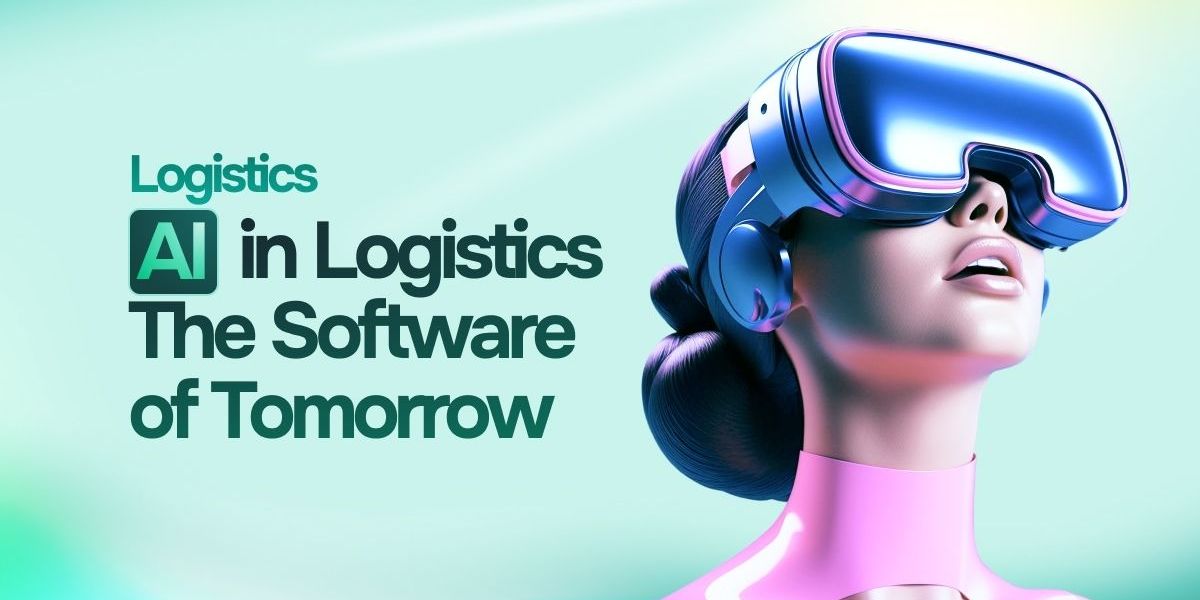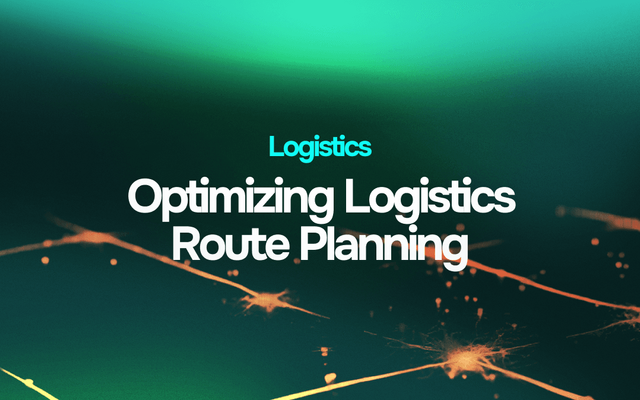
Anthropic recently unveiled Claude 4 Opus, claiming it's the best coding model in the world, capable of working autonomously for up to seven hours on complex tasks. Meanwhile, Google's Gemini 2.5 Pro is showcasing "thinking models" that reason through problems step by step. The AI arms race isn't slowing down, and logistics companies can't afford to watch from the sidelines.
And AI for logistics isn't sci-fi anymore—it's the logical next step in this relentless march forward. These tools are too powerful to ignore and too good to pass up. Logistics companies might have to sell their souls to the algorithmic devil, but it's either that or watch competitors do the same and wipe them out completely.
Right now, AI logistics software is grinding through route optimization, sorting warehouse workflows, and reading shipping manifests while companies sleep. It's everywhere — and if logistics software with AI integration isn't built to ride that wave, then it's floundering on the surfboard watching everyone else do it.
AI and logistics aren't separate entities anymore. They're entwined like overcomplicated cables behind a dusty router — except this time, the cables learn, predict, and get smarter every time something breaks. AI isn't just a tool. It's an agent. Perhaps your most important employee right now.
AI and Logistics in 2025 – Not the Future, the Present
The logistics industry has always been about “issues” and complicated things. But 2025? It’s reached full rubicund chaos mode—hyper globalized supply chains, unpredictable consumer demand, sustainability pressures, and regulatory ping-pong. It’s beautiful in a numinous, anxiety-inducing kind of way.
It’s tariff wars — It’s new governments. It's a cyberattack. It’s AI-induced nightmares. It’s bureaucracy sticking its nose where it doesn't belong.
And inside this maelstrom of noise, companies are doing the only thing that makes sense: handing over the messy bits to AI solutions for logistics that don’t get tired, distracted, or sick of Excel formulas. Of machines that, unlike their human bone counterparts, don’t need help.
What AI Looks Like in Real Life (Not in Hype Decks)
Here’s what AI and logistics actually look like on the ground. No slides. No metaphors. Just cold, hard machine learning doing the work:
Machine Learning: Forecasting demand, spotting supply chain patterns, and learning from failure faster than your Monday all-hands ever could
Computer Vision: Scanning damaged packages, tracking inventory in real-time, preventing loss like a hawk with HD eyes
Natural Language Processing (NLP): Reading and understanding unstructured data—emails, invoices, customs forms—without crying
Robotic Process Automation (RPA): Automating those soul-killing repetitive tasks that somehow still live in logistics (yes, you, 13-step invoicing process)
It’s effulgent, raw, and incredibly efficient — there’s an elegance to it, but it’s passing.

How AI Is Transforming Custom Logistics Software (And Why You Should Care)
Do you want use cases? Cool. Let’s toss a few flaming examples on the table. These aren’t future dreams—they’re current problems getting handled by real AI solutions for logistics.
AI-Powered Route Optimization
Traffic. Delays. Supply hiccups. Weather tantrums. Good luck managing all that manually. AI for logistics looks at your entire routing universe and just figures it out. It’s that simple. It looks at patterns and either predicts them or, if it hits them out of left field, it already has backup plans and contingency strategies to mitigate the blow.
Here’s what smart route optimization actually delivers:
Routes that adapt in real-time to actual road conditions
Fuel savings you can measure in zeros
Fewer late deliveries (and angry customer emails in ALL CAPS)
Load balancing based on driver performance and vehicle history
It’s about not being dumb. And manual routing? That’s dumb. That’s as gone as the proverbial dodo.
Predictive Analytics for Forecasting
AI predicts - to what extent? If properly channeled, it can tell you who’s going to win the next elections. Why? It reads data at the speed of light — and it reads all the data. That’s why for supply chains it’s such a massive hit.
AI in forecasting delivers:
Demand prediction based on real-world variables (not wishful thinking)
Automated replenishment triggers for SKUs about to run dry
Forecasting errors reduced by up to 50%, depending on data quality
Seasonality and trend awareness you didn’t know you needed
Automated Warehouse Ops
Not some Jetsons-level robot uprising. Just smarter orchestration of what’s already there. The truth is that, in this game, you have to always see what the big boys are doing — and the biggest, Amazon, they went and gave Terminators a job and health insurance.
You get:
Smarter pick-and-pack paths for human and robotic workers
Vision-based defect detection in packaging
Real-time inventory sync across systems
A reduction in loss, damage, and operational bloat
Sort of like, and pardon the joke, putting a quiescent warehouse into caffeinated motion. Quiet. Effective. Slightly unnerving.
Real-Time Exception Handling
Stuff goes wrong. AI doesn’t just tell you that it went wrong. It tells you:
What happened
Why it happened
What to do next
Who to tell
It's a whole level of support your ops teams needed — right now. Not yesterday. And what’s more to the point is that level of support you find out you need once you have it. The type once installed, you simply can’t live without.

Why AI Logistics Software Delivers Real ROI
Forget the tech jargon and everything else — what are you buying? What are the benefits? Here’s what you’re really getting with that price tag when you adopt logistics software with AI integration into your stack.
Straight-Up Cost Cuts
We’re not talking “maybe” savings. We’re talking:
10–20% reductions in operating costs
Fewer hours wasted on manual processes
Less overtime, fewer “clean-up” shifts
Fuel savings that literally pay for the AI investment itself
Happier Customers (Even the Unreasonable Ones)
AI powers:
Live delivery ETAs that don’t lie
Fewer missed deliveries
Faster exception resolution
Smarter last-mile updates
And that means fewer refund requests and more glowing reviews from Barb in Idaho who still calls when the package is 15 minutes late.
Built-In Agility
Stuff breaks. Markets shift. AI logistics software keeps you from face-planting:
Automated scenario planning
Alternative routing and sourcing recommendations
Real-time contingency triggers
You can actually respond instead of react—and that’s a huge upgrade.
Real-Time Intelligence That’s Actually… Useful
Dashboards are great. But what about AI telling you:
"Hey, this carrier underperformed last week, maybe rethink that vendor"
"Your costs spiked 12% in Zone 4, here’s why"
"You’re out of space in Warehouse B—here’s how to fix it"
Less data. More decisions. No aporia.
Get Smart or Get Flattened
Here’s the thing: AI is everywhere- on your phone, on your TV, in your washing machine. You have to make a pact with that devil. PERIOD. And in logistics, AI solutions aren't some premium upgrade or something you add on. That’s how the game is played now. They are the new paradigm
Companies that build their logistics stack without AI? They're showing up to a Formula 1 race with a tricycle and a plucky attitude, and this isn’t an '80s movie where that will cut it. Cute. But doomed.
Companies that bake AI into custom systems?
They scale faster
They react sharply
They win more contracts
And they don’t burn out their ops team doing it
So yeah—time to stop dabbling and start building smart. Because the future isn’t knocking at your door — it’s sitting down at the table, drinking your beer, and telling your wife how to get things done. It’s already built into everything.







